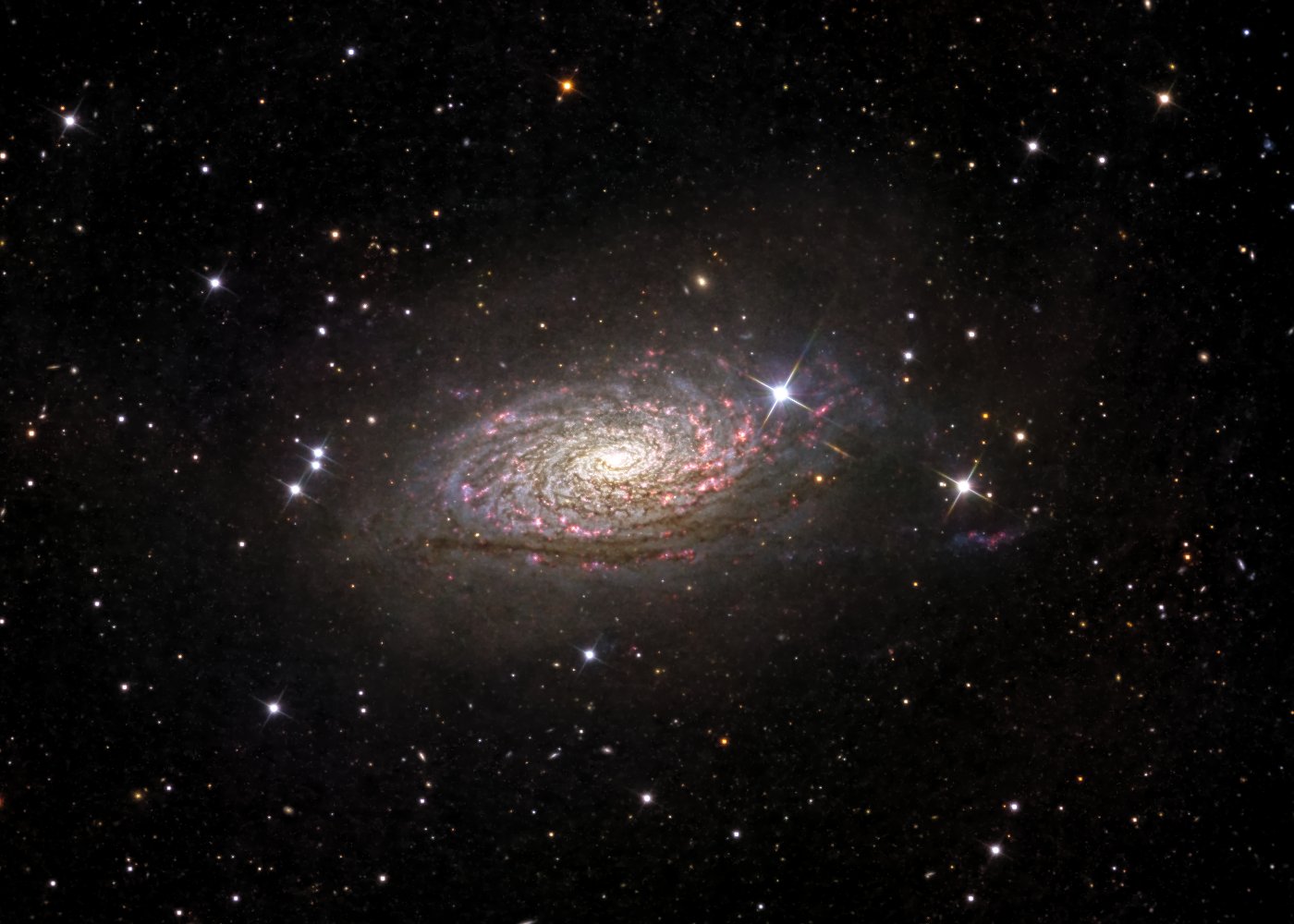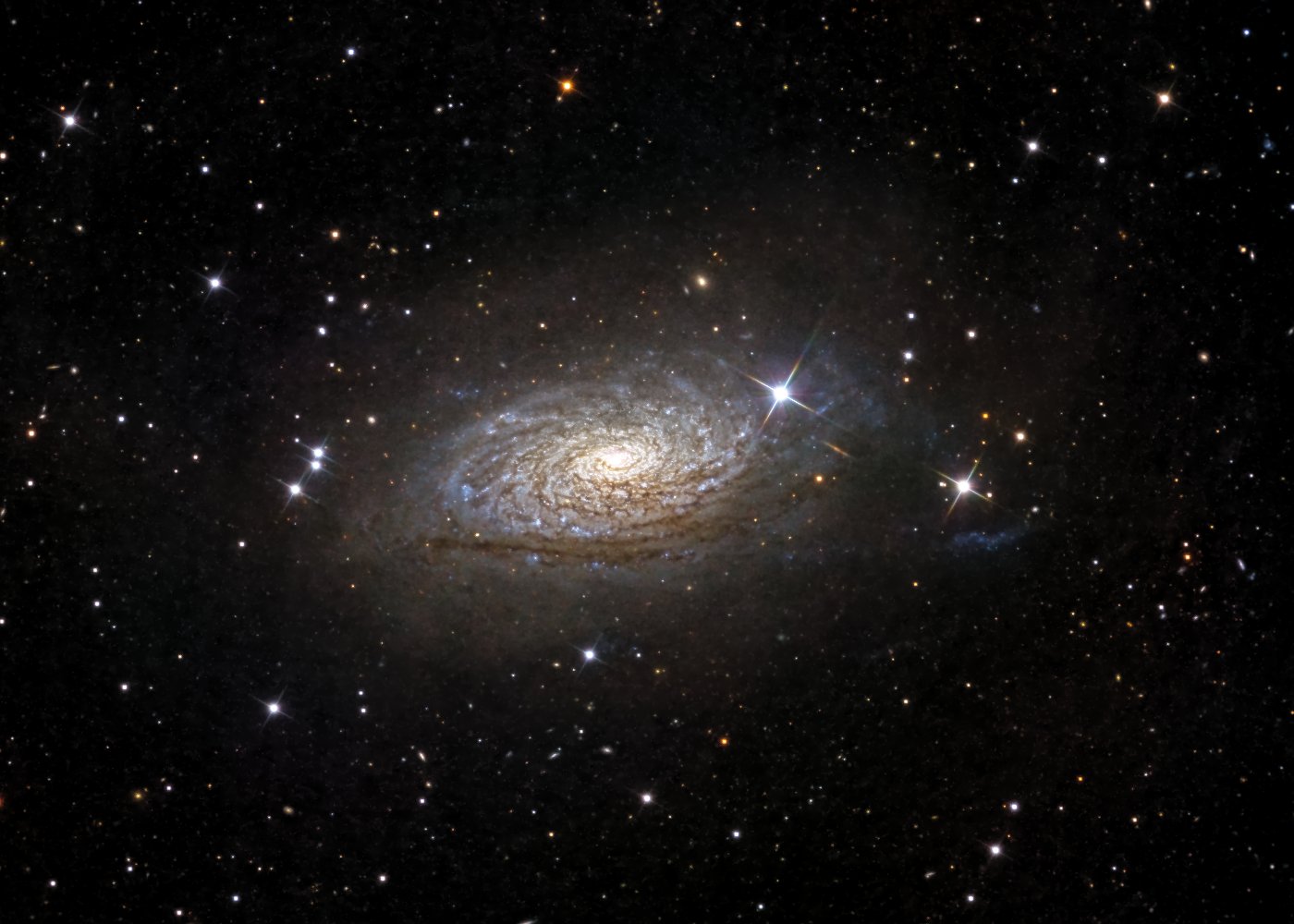M63 in H-alpha and continuum light
M63 (also known as Sunflower Galaxy) is a spiral galaxy in constellation Canes Venatici which lies at a distance of about 29 million light years. It is the largest member of the M51 group.
Click on the image to load a full resolution version using a JavaScript viewer.
By toggling between the images (click on the button) it can be seen that the HII regions (reddish) correlate with bluish regions. That's because the HII gas clouds typically contain many young (blue) stars which are also responsible for the ionization. Furthermore the HII regions also emit [OIII] and H-beta light
which is collected by the blue filter.
The spiral structure is only visible near the center of the galaxy. The outer disk has been disturbed by accretion of dwarf galaxies and by tidal effects, see [1].
The clump in western (right in the image) outer region is UGCA 342. (Outlines can be plotted in the Javascript viewer by pressing the key '3' or via menu.)
According to [1] this structure seems to be a part of M63, maybe a remnant of a spiral arm.
Image data
| FOV: | 0.53° × 0.4° (full view) | ||||||||
|---|---|---|---|---|---|---|---|---|---|
| Date: | 2020-2022 | ||||||||
| Location: | Pulsnitz, Germany | ||||||||
| Instrument: | 400mm Newton at f=1520mm | ||||||||
| Camera Sensor: | Panasonic MN34230 | ||||||||
| Orientation: | North is up | ||||||||
| Scale: | 0.8 arcsec/pixel (at full resolution) | ||||||||
| Total exposure times: |
|
Image processing
All image processing steps are deterministic, i.e. there was no manual retouching or any other kind of non-reproducible adjustment. The software which was used can be downloaded here.Image processing steps where:
- Bias correction, dark current subtraction, flatfield correction
- Alignment and brightness calibration using stars from reference image
- Stacking with masking unlikely values and background correction
- Denoising and deconvolution
- Color composition
- Dynamic range compression using non-linear high-pass filter
- Tonal curve correction

